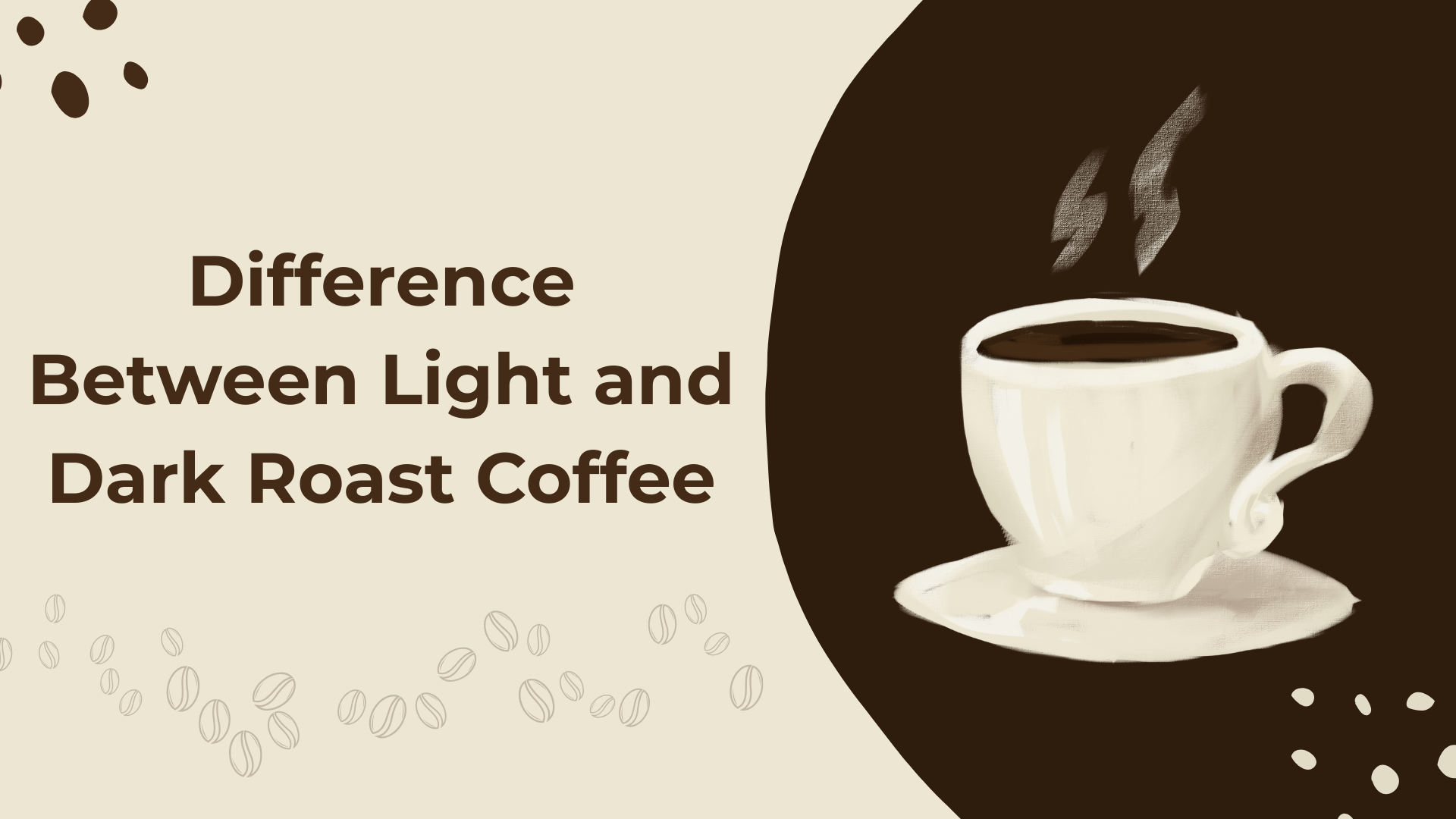When it comes to coffee, one of the first things coffee enthusiasts debate is whether they prefer light or dark roast. Both types of roast bring their own unique flavor profiles and qualities to the cup, and choosing between them often comes down to personal preference. In this article, we’ll explore the key differences between light and dark roast coffee, helping you make an informed decision on which roast best suits your taste.
What is Light Roast Coffee?
Light roast coffee refers to beans that are roasted for a shorter period of time at lower temperatures. Typically, light roasts reach an internal temperature of around 375°F to 410°F. At this stage, the beans retain their original flavors, and you can taste the distinct characteristics of the coffee’s origin.
Flavor Profile of Light Roast Coffee Light roast coffee is known for its more acidic, fruity, and floral flavors. Since the beans are roasted for less time, they preserve more of the natural flavors from the region where they were grown. You might notice bright notes like citrus, berries, or even herbal hints in a cup of light roast. It’s often described as having a clean, crisp taste with a higher perceived acidity. If you’re looking for a cup that feels light and refreshing, light roast coffee is a great choice.
What is Dark Roast Coffee?
On the other hand, dark roast coffee beans are roasted for a longer period at higher temperatures, usually between 430°F and 480°F. As the beans roast, they undergo a process known as “the second crack,” where they start to emit oils and turn dark brown or almost black. This is where dark roast coffee gets its signature bold, smoky flavor.
Flavor Profile of Dark Roast Coffee Dark roast coffee is characterized by its low acidity and rich, full-bodied flavor. The roasting process brings out deep, roasted flavors, and you’ll often find notes like chocolate, caramel, or even a bit of smokiness. Since the roasting process eliminates most of the coffee’s original fruity or floral notes, dark roasts tend to have a more robust, heavy taste that can sometimes have a bittersweet edge. It’s perfect for those who enjoy a rich, strong cup of coffee.
Key Differences Between Light and Dark Roast Coffee
1. Roasting Time and Temperature
Light roast coffee beans are roasted for a shorter amount of time at lower temperatures, preserving more of the bean’s original flavors. Dark roast beans are roasted for a longer period at higher temperatures, which leads to the development of deep, roasted, and sometimes smoky flavors.
2. Flavor Profile
Light roasts are often fruity, bright, and acidic, showcasing the unique flavors of the beans’ origin. Dark roasts, on the other hand, have a bolder, fuller taste with chocolatey, nutty, and caramelized flavors. They have low acidity and tend to be smoother and more robust.
3. Caffeine Content
There’s a common misconception that dark roasts have more caffeine than light roasts. In reality, the caffeine content between the two is very similar. However, light roast coffee tends to have slightly more caffeine by volume because the beans are denser than dark roast beans. The longer roasting time of dark roasts causes the beans to lose moisture and expand, making them less dense. So, while the difference is small, light roasts tend to pack a slightly stronger caffeine punch per ounce.
4. Acidity Levels
Light roast coffee is higher in acidity, making it a better choice for those who enjoy a bright, tangy flavor. This acidity can range from mild to pronounced, depending on the beans and their origin. Dark roast coffee has a much lower acidity, giving it a smoother, fuller taste. If you’re sensitive to acidity or prefer a less sharp flavor, dark roast may be the better option for you.
5. Color and Appearance
Light roast beans are a pale, golden brown color and are slightly dry on the outside since they haven’t released many oils during the roasting process. Dark roast beans are deep brown to almost black and are typically oily, giving them a glossy appearance.
6. Body and Mouthfeel
Dark roasts often have a fuller body and heavier mouthfeel due to the development of oils during roasting. Light roasts tend to be more delicate and often feel lighter in the mouth. If you prefer a smoother, creamier texture, dark roast is your best bet.
7. Origin and Freshness
Light roast coffee is best enjoyed fresh and often highlights the unique flavors of the bean’s origin. The beans’ bright, fruity, or floral notes tend to fade as they age. Dark roasts, while also best enjoyed fresh, tend to have a more uniform flavor profile and can often hold up well for longer periods after roasting.
Which One Should You Choose?
Choosing between light and dark roast ultimately depends on your personal preferences. If you love a bright, complex cup of coffee that allows the flavors of the coffee’s origin to shine, a light roast will be your go-to. It’s perfect for those who appreciate a refreshing, fruity, or floral flavor with a higher acidity.
If you prefer a coffee that’s rich, bold, and smooth with deep, roasted flavors, a dark roast might be more your style. Dark roasts are perfect for those who love a full-bodied, strong cup of coffee, with chocolatey and caramelized flavors.
Conclusion
In the end, both light and dark roast coffees have their own charm and offer different coffee experiences. While light roast highlights the distinct flavors of the coffee beans, dark roast offers a robust and bold cup that is ideal for those who enjoy a richer taste. Whether you’re a fan of bright and acidic or smooth and smoky, the choice between light and dark roast comes down to your own taste preferences. Whichever roast you choose, it’s all about enjoying that perfect cup of coffee that fits your mood and taste!
